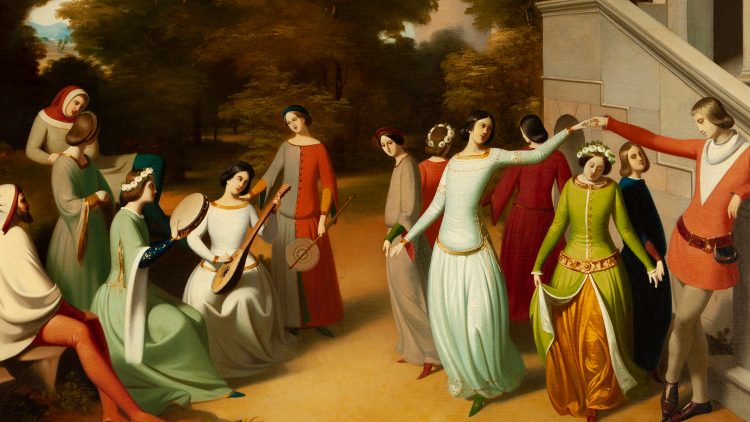The creative essence of Pere Pruna
An example of this is Claudio Lorenzale’s canvas in tender, whose aesthetics and intentionality follow the purist artistic ideology of his master, Friedrich Overbeck.
The piece, inspired by a past that is represented in a bucolic way, introduces us to a scene where the presence of a group of highborn young people, who are enjoying the arts, brings us closer to the Italian aesthetics of the early Renaissance, evoking, to a large extent, the story of The Decameron by Boccaccio in which he narrates the stay of a group of young people in a villa on the outskirts of Florence, where fleeing from the black plague that struck the city, they will live their days devoted exclusively to the arts and leisure. Lorenzale turns here to one of the greatest works of European literature to relive the splendorous past of the humanist ideals initiated by Petrarch in the 14th century.
The purist aesthetic ideals of medieval inspiration are reflected in a scholastic and eclectic composition based on the preponderance of the drawing that determines the forms with a hardness in the outline. Likewise, and as our work illustrates, depth and volume were not part of his plastic concerns, and we can observe in it a minimal use of chiaroscuro, which despite the perspective of the scene, shows us a clear inclination towards flat colors. This uniform luminosity expresses the timelessness that they intended to give to their work as a manifestation of the triumph of the sacred over time.

